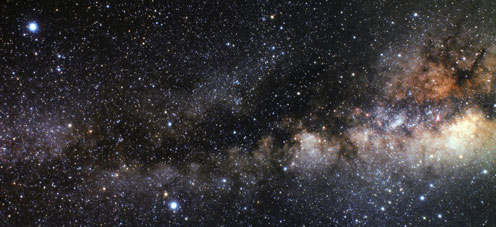
A snapshot of a simulated giant molecular cloud marked with with star clusters in formation. Credit: McMaster University
Clusters of stars across the vast reaches of time and space of the entire universe were all created the same way, researchers at McMaster University have determined. Researchers Corey Howard, Ralph Pudritz and William Harris used highly-sophisticated computer simulations to re-create what happens inside gigantic clouds of concentrated gases known to give rise to clusters of stars that are bound together by gravity.
The state-of-the-art simulations follow a cloud of interstellar gas 500 light years in diameter, projecting 5 million years’ worth of evolution wrought by turbulence, gravity and feedback from intense radiation pressure produced by massive stars within forming...
Read More







Recent Comments